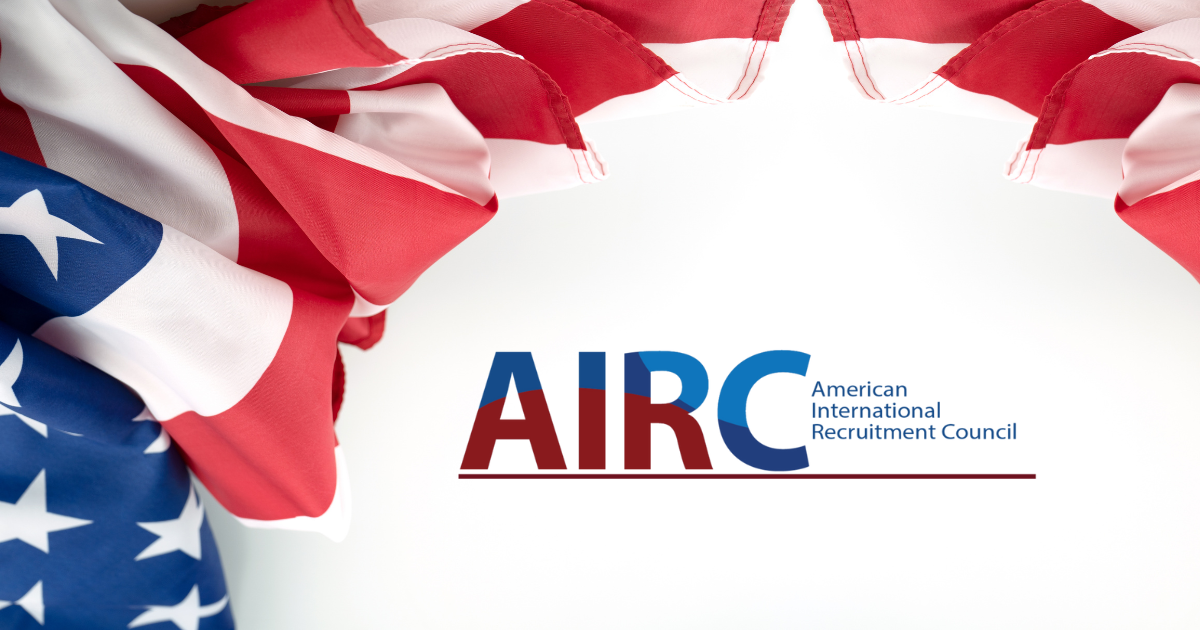In a statement on 9 November 2022, the Executive Director of the American International Recruitment Council (AIRC), Brian Whalen, officially launched the International Enrollment Management (IEM) Standards for Higher Education Institutions. The standards were developed over the last twelve months by a working group composed of AIRC members and endorsed by the AIRC’s Board of Directors on 31 October.
According to the statement, the new IEM Standards “are intended to provide an authoritative resource to guide higher education institutions in developing and managing all aspects of international student enrollment.”
Section 3 of the IEM Standards covers ‘Marketing and Recruitment’, and includes guidance for institutions working with education agents. Importantly, the preamble for that section notes that institution promotional activities must involve ‘accountability for third-party relationships’, which would include education agents. Given the nature of an agency relationship – i.e. the agent is acting for, and standing in the shoes of, the principal ( in this case the educational institution) – all of the elements of section 3 are relevant to the relationship between US educational institutions and the education agents that they work with. With that in mind, we have included the full text of section 3 of the IEM standards below.
3. Marketing and Recruitment
Marketing and promotional activities are essential aspects of international enrollment. They are the main channels for achieving enrollment growth and should correspond to a strong and effective marketing strategy. Promotional activities must adhere to compliance requirements including honesty and transparency, diversity, equity, and inclusion, accountability for third-party relationships and appropriate consent for use of images.
3.1 Accuracy in Marketing Information
3.1.1 How does the institution market its educational and institutional services professionally and accurately, and maintain the integrity and reputation of its particular academic programs as well as of the U.S. education sector?
3.2 Honesty
3.2.1 How does the institution represent itself honestly, claim competency when demonstrable, and avoid misrepresentation?
3.3 Transparency and Accessibility
3.3.1 How does the institution conduct itself in a transparent manner in which only truthful claims are made, and in which students are equally valued and served in an unbiased manner?
3.3.2 How does the institution transparently present the costs of attendance for international students?
3.3.3 How does the institution make information about its international admissions office, policies, and procedures accessible to students with different cultural backgrounds, native languages, English language competencies, and physical abilities?
3.4 Relationships with Third Parties, including Educational Agencies and Service Providers
3.4.1 How does the institution provide pertinent information and training on marketing and recruitment efforts to its educational agency partners and other third parties so that prospective students may make informed decisions about institutional choice, thereby ensuring better alignment between students’ expectations and their actual experiences?
3.4.2 How does the institution make certain that its legal relationships are reflected in written contracts or agreements with readily understood and up-front disclosure of services and related fees?
3.4.3 How does the institution help to determine that educational agencies, service providers and other third parties comply with their local and U.S. laws and federal regulations?
3.4.4 How does the institution ensure that information provided to prospective students via third parties is current and accurate at all times and throughout each stage of the recruitment process?
3.4.5 How does the institution ensure that educational agencies, service providers and other third parties are duly trained by, and remain current on, the institution they represent, including topics such as admission and scholarship requirements, academic programs, international student support services, diversity, equity and inclusion policies, and policies relevant to an international student’s institutional choice? How does the institution ensure information is clearly articulated regarding available marketing fees, commissions and other methods of compensation, dates and process for invoicing and payment. How does the institution address conflicting data on student enrollment and attribution, financial concerns and partnership disagreement?
3.4.6 How does the institution collaborate closely with its educational agencies, service providers and other third parties, and establish clear procedures for sustainable relationships, including mechanisms for compliance with AIRC guidelines?
3.5 Confidentiality of Records
3.5.1 How does the institution maintain the confidentiality and security of records, notes, and student information?
Education Agent due diligence
AgentBee’s education agent due diligence solution supports educational institutions to implement best practice education agent due diligence processes.
Educational institutions can use it to:
- do due diligence on education agents – check new agents before agreeing to work with them, and run regular checks on current agents.
- protect your brand – detect cases of unauthorised agents using your institution’s name, logo or other IP without permission.
Liked this post?
Please share this post on with your networks using the buttons on the left. Thanks!
Source: AIRC
